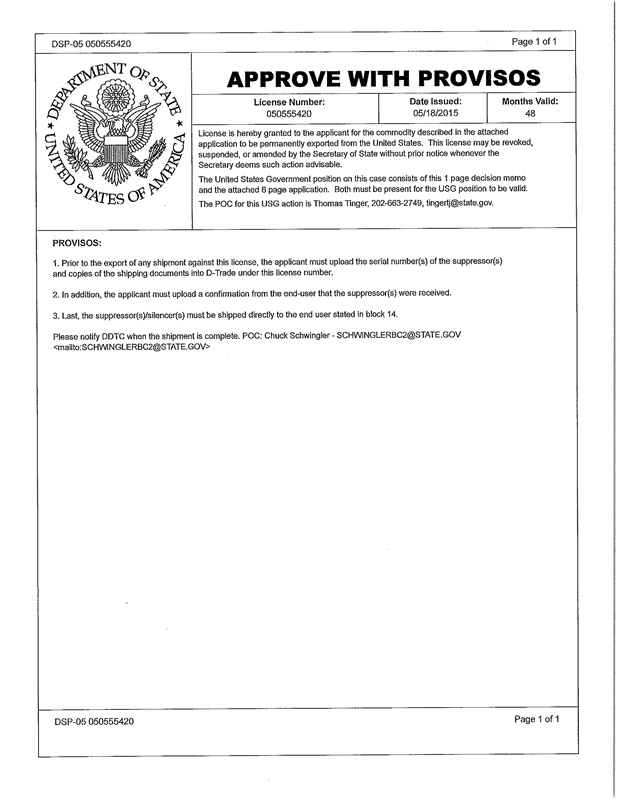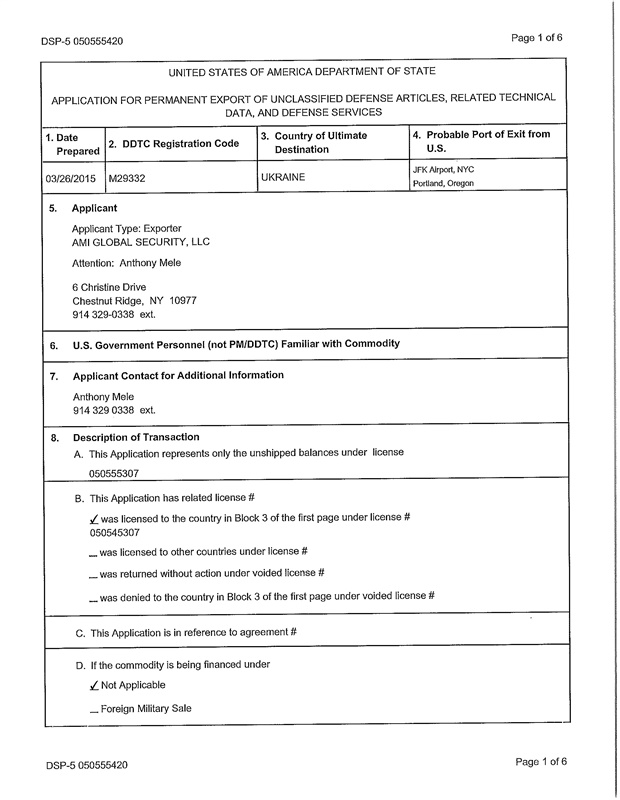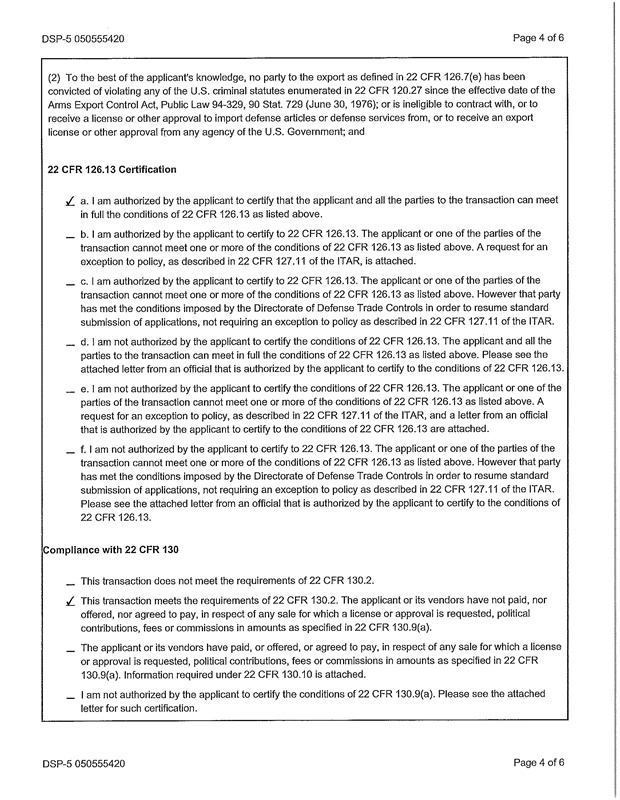- Holy Obama! (Stupid Americans in Moscow)
 4:36
4:36 - Psaki Obama banned the elections in Moscow
 00:38
00:38 - Avtomoshennik-pedestrian
 1:25
1:25 - US President Barack Obama and Mikhail Kryzhanovsky?
 00:41
00:41 - Former CIA agent: Obama supports torture
 2:35
2:35 - Sensation! Barack Obama and "the case of Mikhail Kryzhanovsky"
 5:47
5:47 - "Barack Obama" robbed a cafe in the American town of Salem
 00:37
00:37
Copyright Disclaimer Under Section 107 of the Copyright Act 1976?Fair use is a use permitted by copyright statute that might otherwise be infringing. Non-profit, educational or personal use tips the balance in favor of fair use. Unless you are in this field of investigative journalism, especially covering extremely sensitive subjects and potentially dangerous subjects as well, you simply cannot understand the complexities and difficulties involved with this work that I face every day.
Saturday, June 20, 2015
OBAMA Agents - KGB WITNESSES WANTED
Related Videos

(Photoillustration Tablet Magazine; original photo Vitaly Armand/AFP/Getty Images and map University of Texas Libraries.)
The dominant narrative of modern Middle East history emphasizes
the depredations visited upon the region by European colonization and
accepts as a truism that the former colonial powers prioritized the
protection of their material interests—in oil, above all—above the
dignity and self-determination of the region’s inhabitants. Thus did
botched decolonization result in endless instability. The most
intractable of the regional conflicts to which this gave rise, that
between the Arabs and Israelis, is attributed in this narrative to
Israel’s unwillingness to accede to Palestinian national aspirations.
Thus did the region become a breeding ground for radicalism, intensified
by Cold War rivalry between the superpowers, who replaced the European
colonizers as the region’s meddling overlords. Then came Mikhail
Gorbachev—a Westernizing reformer. At last, the Cold War was over. A new
world order was at hand.What if this conventional wisdom is nonsense? Russian exile Pavel Stroilov argues just this in his forthcoming book, Behind the Desert Storm. “Not a word of it is true,” he writes. “It was the Soviet Empire—not the British Empire—that was responsible for the instability in the Middle East.”
Stroilov, a historian now living in London, fled Russia in 2003 after stealing 50,000 top-secret Kremlin documents from the Gorbachev Foundation archives, where he was working as a researcher. He was given access to the archive in 1999, but Gorbachev refused him permission to copy its most significant documents. Having observed the network administrator entering the password into the system, Stroilov reproduced the archive and sent it to secure locations around the world.
Stroilov’s cache includes hundreds of transcripts of discussions between Gorbachev and foreign leaders, politicians, and diplomats. (The originals are still sealed under Kremlin pressure.) There are notes from Politburo and other top decision-making meetings, notes written by Gorbachev’s aides Anatoly Chernyaev and Georgy Shakhnazarov and by Politburo member Vadim Medvedev. None were ever available to independent researchers, although some were published by the Gorbachev Foundation in a heavily censored version. Stroilov also stole the 1972-1986 diary of Anatoly Chernyaev, deputy chief of the Communist Party of the Soviet Union International Department and Gorbachev’s principal aide on international affairs from 1986 to 1991. He stole reports dating from the 1960s by Vadim Zagladin, who was deputy chief of the International Department until 1987 and Gorbachev’s adviser from 1987 to 1991. (Stroilov also draws upon Soviet dissident Vladimir Bukovsky’s vast, stolen collection of documents, as well as the Mitrokhin Archive, a collection of notes taken secretly by the defector Vasili Mitrokhin during his 30 years as a KGB archivist in the foreign intelligence service and the First Chief Directorate.)
Stroilov’s book about these documents, many only now translated into English, challenges the conventional wisdom that Western colonialists are to blame for the chaos in the region. All of its major conflicts, he argues, were caused by Soviet expansionism. Terrorism and the rabid anti-Israeli animus of the Arab world were Soviet inspirations. And the revolutions we are seeing now were inevitable, for the Soviet client states were socialist regimes, and sooner or later socialism exhausts economies and thus the patience of the people who live in them.
Stroilov focuses upon Gorbachev’s intrigues in the Middle East, explaining the Arab Spring as the “final act of the Cold War.” This thesis is overstated—Stroilov is a bit too enamored of his own collection to admit the complexity of these events—but there is nonetheless much in his archives to support this description. The documents clearly suggest that many contemporary conflicts in the Middle East were fomented by the Soviet empire, particularly in the final years before its break-up. And the events he describes have had a significant impact upon the current state of the region—from the conflict in Iraq to the Israeli-Palestinian peace process, to the development of a de facto alliance between the European Union and the Arab states. Perhaps most significantly, there is much here to suggest that it is past time to reexamine Gorbachev’s reputation as a reformer and liberalizer. Stroilov’s book suggests that in the Middle East, Gorbachev’s policy was old-school Kremlin imperialism, all the way to the end.
***
From the close of World War I, the great prize of the Middle East has been the Persian Gulf. During the Cold War, America and its allies in Europe and Asia depended upon its oil for 90 percent of their energy needs; developing countries would be instantly crippled by a sharp hike in oil prices. But for the Soviets, attaining control of the Gulf could be achieved only by direct military aggression. Following the return of British forces to Kuwait in 1961 to defend the Emirate from Iraq’s Abd al-Karim Qasim—whose ambitions for Kuwait were subsequently, if temporarily, realized by Saddam Hussein—it became clear to the Soviets that the West would go to any length to defend the oil. “And so the comrades postponed the conquest of the Gulf,” writes Stroilov, “although some of them were sorely disappointed with that decision.”
What, then, was Plan B? It was “the subversion and eventual destruction of Israel.”
Though not as good as the Gulf oil fields, Israel would also be a big prize. It was the only democracy in the region, the strongest military power in the pro-Western camp and, indeed, the bridgehead of the Western world. Even more importantly, the very process of crusading (or jihadding) against Israel offered fantastic political opportunities. A besieged Israel effectively meant millions of Jewish hostages in the hands of the comrades, and the threat of genocide could intimidate the West into making great concessions in the Gulf or elsewhere. On the other hand, by making the Israeli-Palestinian conflict the central problem of the Middle East, the Soviets could exploit Arab nationalism, anti-Semitism, and even Islamic religious feelings to mobilize support for their policies. Indeed, under the banner of Arab solidarity, the socialist influence in the region grew far beyond the socialist regimes and parties.The code-name for this operation against Israel, according to Gen. Ion Mihai Pacepa, the highest-ranking defector from the Soviet Bloc, was “SIG”—Sionistskiye Gosudarstva, or “Zionist Governments.” In a National Review article, Pacepa recalls a conversation he had with KGB chairman Yuri Andropov, who envisioned fomenting “a Nazi-style hatred for the Jews throughout the Islamic world. … We had only to keep repeating our themes—that the United States and Israel were ‘fascist, imperial-Zionist countries’ bankrolled by rich Jews.”
In the mid-1970s, Pacepa recalls, the KGB ordered its Eastern European sister agencies to scour the Middle East for trusted agents, train them in disinformation and terrorism, and export a “rabid, demented hatred for American Zionism.” They showered the region with an Arabic translation of the Protocols of the Elders of Zion and KGB-fabricated documents alleging that Israel and the United States were dedicated to converting the Islamic world into a Jewish colony.
Following the defeat of the Egyptians in the Six Day War, the Soviets came to a second realization: A conventional military confrontation with Israel, and by extension the West, carried too great a risk of escalating into nuclear war. A change of tactics was required. Gen. Alexander Sakharovsky, then head of the KGB’s intelligence arm, explained this to his East European colleagues: “[T]errorism should become our main weapon.” Sakharovsky boasted that airplane hijackings were his own invention; he decorated his office with a world map, covered in flags, each marking a successful hijacking. Though the PLO managed to unite various terrorist organizations, “the supreme headquarters of the whole network was, of course, the Kremlin,” Stroilov writes, and “the evidence accumulated at this point leaves no doubt that the whole system was invented by Moscow as a weapon against the West, and the PLO was a jewel in their crown.”
Pacepa lists examples of KGB-sponsored acts of terrorism:
November 1969, armed attack on the El Al office in Athens, leaving 1 dead and 14 wounded; May 30, 1972, Ben Gurion Airport attack, leaving 22 dead and 76 wounded; December 1974, Tel Aviv movie theater bomb, leaving 2 dead and 66 wounded; March 1975, attack on a Tel Aviv hotel, leaving 25 dead and 6 wounded; May 1975, Jerusalem bomb, leaving 1 dead and 3 wounded; July 4, 1975, bomb in Zion Square, Jerusalem, leaving 15 dead and 62 wounded; April 1978, Brussels airport attack, leaving 12 wounded; May 1978, attack on an El Al plane in Paris, leaving 12 wounded.Stroilov’s documents indicate that the Soviets and Syrians also took credit for blowing up the U.S. Marine barracks in Lebanon in 1983.
Two of Bukovsky’s documents appear in English for the first time in Behind the Desert Storm. The first is Yuri Andropov’s memo to Leonid Brezhnev in 1974 detailing a KGB meeting with Palestinian terrorist Wadie Haddad. It recommends that the Soviet government provide material support to Haddad’s Popular Front for the Liberation of Palestine. The second is the transcript of a 1984 Politburo meeting approving the shipment of 15 million rubles’ worth of weapons and ammunition to the Democratic Front for the Liberation of Palestine in exchange for a collection of ancient art. The invention of modern terrorism: All credit is due to the Kremlin.
Then there was the 1979 Iranian revolution. Again, Stroilov suggests, the conventional narrative is wrong. This was not a spontaneous Islamist uprising but a well-organized communist revolution gone awry. It had been planned since the end of World War II, when Soviet forces withdrew from Iran under Western pressure but left behind a massive spy network. The standard ratio of KGB residencies was one per country; in Iran, the Soviets had nearly 40. They worked for the next 33 years to foment the revolution, training illegals from the Soviet republics to pass as members of Iran’s ethnic groups. Unfortunately for them, they did not know that Vladimir Kuzichkin, their key spymaster in Tehran, had been recruited by MI6. The British shared the information about the upcoming revolution with SAVAK—but too late. By then the revolution was in full force. The mullahs captured SAVAK’s records, and with this knowledge they rounded up every last Soviet agent.
An odd anecdote appears in Stroilov’s account of the final days of the Iran-Iraq war. Khomenei had learned from the Western press that Gorbachev was a man with whom one could do business—a great reformer. Obviously confused, he dispatched an ayatollah to deliver a handwritten letter to Gorbachev. “The text, alas, is still unknown to historians,” writes Stroilov, “but the whole Politburo is on record laughing their heads off when reading it.” The contents may be deduced, he says, from the transcripts of the subsequent Politburo. Khomenei had proposed that Gorbachev should abandon Marxism and convert to Islam.
This, Stroilov remarks, “was hardly much sillier than the attitude of most Western opinion-makers, who hoped that Gorbachev would miraculously transform from a communist to a democrat.”
The envoy was politely disabused of the idea but reassured that the Kremlin and the ayatollahs would still find common ground in their shared goal of destroying the Great Satan:
“Without diplomatic niceties,” as Gorbachev said, he told the Ayatollah how Americans and Pakistanis were undermining the well-known Soviet efforts to achieve peace in Afghanistan, and hinted that, détente and disarmament notwithstanding, he disbelieved all the US assurances of friendship. This he contrasted with the sincerity of the Soviet-Iranian relations. Soon, Comrades and Ayatollahs would note they were in complete agreement, not only about the situation in the Middle East, but also about South Africa, Latin America, East-West disarmament, and especially about “turning the Indian Ocean into a peace zone,” which meant ousting the Americans. Soviet-Iranian joint committees working on these issues mushroomed in 1989, while Foreign Ministers Shevardnadze and Velayati had four meetings in six months.Nuclear energy was listed as one of the key areas of cooperation.
The Red Arabs, as Stroilov calls them—Egypt, Libya, Syria—were socialist regimes and Soviet clients; even deposed Egyptian President Hosni Mubarak, he argues, never fully repudiated his connections to the Soviet Union and should more properly be understood as Nasser’s successor than a Westernizing reformer. For example, in pridefully describing the fruits of one of his five-year plans to Gorbachev, Mubarak described both his real attitude toward the United States and his surprisingly modern outlook on debt-repayment:
GORBACHEV. But where did you get money from? Is it flowing in the Nile?Subsequently, Mubarak said:
MUBARAK. We had to borrow a lot. […] Everyone has debts in today’s world. […] Americans owe money to the Japanese, but Bush does not pay. So what, will Japan declare war to the US? […] I told Reagan that the Soviet Union had never charged any interest for its loans to us. We no longer borrow money from the US. We only accept non-repayable aid, when they are prepared to give it. […]
GORBACHEV. How much is your total debt?
MUBARAK. 50 billion dollars. […] But we can always negotiate on the debts and get postponement of payments again and again. Nowadays, almost nobody repays debts. I’m talking to you absolutely frankly.
I would like to tell you that we continue military cooperation with the USA. They give us $1,3 bn. aid. We still cannot do without it: we need spare parts for military equipment, and so on. But time will come when things turn in different direction. I am telling this to you absolutely frankly.Pleased by this, Gorbachev thereafter kept it in mind that turning Egypt away from the United States might be feasible. Meanwhile, he worked strenuously to unite the Red Arabs with the aim of expelling the United States completely from the region. In page upon page of these transcripts, we see him striving toward this goal, particularly in his meetings with Hafez Assad:
GORBACHEV. […] The Soviet Union, given the capabilities it has, is also prepared to contribute to the unification of the Arab ranks. Of course, our enemies won’t miss the opportunity to present our honest efforts as “Moscow’s conspiracy,” so we should act accurately and carefully. In any case, you can count on our support. […] A success of this cause would be a great historic victory with tremendous consequences.In 1986, as the series of Politburo memos shows, the Syrians proudly reported that they had destroyed the prospect of peace between Israel and Jordan, “wrecked” cooperation between Jordan and the Palestinians, and “effectively blocked” President Ronald Reagan’s peace plan. Gorbachev encouraged them to continue their efforts, lauding Syria’s defense of the “progressive” forces of the Middle East. Gorbachev could rightly claim credit for undermining any prospects for regional peace in the 1980s.
The Soviets’ proudest accomplishment of the epoch, however, was the First Intifada. In April 1988, Yasser Arafat went to Moscow to explain his plan and seek approval. “Gorbachev acknowledged that he fully understood the PLO’s ‘tactics of using different forms of struggle.’ ” Arafat was quite clear what he meant by this:
ARAFAT. We also continue the struggle in other forms, on other fronts. The armed struggle does not stop in the South of Lebanon. Artillery fire, air raids, other actions take place on daily basis.Moscow approved.
But the ultimate, golden goal remained the same: the Gulf—the West’s lifeline. In the “official narrative,” as Stroilov terms it, Soviet-American cooperation in ousting Saddam from Kuwait marked the end of the Cold War and the beginning of the New World Order. In reality, Stroilov argues, Gorbachev’s plan “was to take the Western side, ensuring it would have a say in solving the crisis. Then it would use this position to minimize the damage Saddam caused, and to advance its own agenda in Middle East.” Among the goals of that agenda: To replace Washington’s power with a “world government” sympathetic to communist aspirations. The leaders of the Italian Communist Party were particularly inspired by this idea:
OKKETTO. The UN shall become an instrument of the world government.Stroilov’s archives closely detail the Soviet mediation of secret negotiations between Washington and Baghdad during the fall of 1990. The superpowers apparently came near to agreement on rather extraordinary terms: Saddam would withdraw from Kuwait in exchange for a scheme, proposed by the Soviets, to hold a U.N.-sponsored international conference designed to result in the disarmament and dismemberment of Israel.
RUBBI. Berlinguer spoke about the world government as early as at the 15th Congress of the ICP.
OKKETTO. At that time, many in the audience smiled at this.
GORBACHEV. We also have many people smiling at this. Maybe, indeed, it is worth thinking about arranging for the communists, social democrats and someone else to work out an agreed constructive proposal. It should be not propaganda, but a real policy.
OKKETTO. [The leader of West German Social Democrats, Willie] Brandt wants to involve representatives of parties, statesmen and other major figures in this work, to discuss the problems during seminars and conferences.
GORBACHEV. Let us arrange all this, and also consult Brandt and others.
The documents show that George H.W. Bush agreed to that deal in principle—so long as the linkage was kept secret.
G. BUSH. I agree with everything you’ve said. We do not seek laurels of individual or collective victors in the fight against Saddam Hussein. But both you and I want the new order to prevail in the future world. For this, we need to find such a response which provides guarantees against an aggression in the future. As far as I see, that is exactly what many provisions of your plan are designed for.He wanted Saddam to withdraw from Kuwait as if unconditionally; the United States would then pressure Israel to join an ostensibly unrelated “peace process.” Bush asked Gorbachev to see what Saddam thought about this. Saddam demurred: He would only agree if the deal was made openly. It is fascinating to compare Stroilov’s transcripts with the memoirs written by Bush, Brent Scowcroft, and James Baker. The latter memoirs suggest that Gorbachev wanted to mention Israel and the Palestinians in a joint public statement but then conceded the point. In fact, the argument was about a secret deal, not a public statement.
***
Sooner or later, as Stroilov correctly notes, all
socialist regimes collapse. He argues that what we are witnessing today
is the collapse of the Soviet empire in the Middle East—a process
similar to that seen in Europe in 1989-1991. But unlike the despots of
Eastern Europe, the Red Arabs were allowed to survive. Rather than
ousting Saddam and pressuring the Soviet Union—which now had only a few
months left to live—to withdraw its influence from the Middle East, Bush
prioritized placating Gorbachev over aggressively pressing the United
States’ advantage. In Stroilov’s view, these regimes could and should
have been overthrown 20 years ago. That they were not, he argues, was
because the Middle East was the domain Gorbachev was determined to
retain and because Americans, naively enchanted by his charisma, allowed
themselves to be hoodwinked.
Had Desert Storm reached Baghdad, the region would be an entirely
different place now. “The greatest (though open) secret of the Operation
Desert Storm is that it failed to achieve its objectives,” Stroilov
writes. According to National Security Directive 54, which authorized
the military action, were Iraq to resort to destroying Kuwait’s oil
fields, “it shall become an explicit objective of the United States to
replace the current leadership of Iraq.” On Feb. 22, 1991, Saddam set
Kuwait’s oil wells alight. So, why did it take 12 more years to get rid
of him? Because Gorbachev and Mitterrand feared that the overthrow of
his regime would leave the United States with too much influence in the
region and thus defected from the coalition. “Without hesitation,”
Stroilov writes, “Bush placed the new world order above everything else.
The rebels were massacred, Saddam’s regime survived, U.S. forces
withdrew.”When 12 years later they returned,
Experts in the State Department concluded: what a surprise, Saddam’s regime was rather popular after all. Other experts blamed the invisible hand of Al Qaeda. Yet another school emphasized the lack of democratic traditions in the history of the Islamic World in general and Iraq in particular.It is impossible to say whether he is right—but it is certainly a thesis worth considering.
But if you repeat this experiment in any other country, the result will be exactly the same. Tell citizens to rise against tyranny, promise them support from the US forces, and when the massacre begins, withdraw quietly. Come back 12 years later and see for yourself, whether the locals would be in a pro-American or anti-American mood.
A final note: While not discussed at length in this book, the Bukovsky archives show clearly that nuclear disarmament campaigns across Europe were largely funded by the Soviet bloc. The money was channeled through communist parties or other pro-Soviet organizations.
Baroness Catherine Ashton was the treasurer for the Campaign for Nuclear Disarmament from 1980 to 1982. The CND was notoriously secretive about its sources of funding and refused to submit its accounts to independent audit; when it was finally forced to do so under immense pressure, the auditors discovered that 38 percent of their annual income could not be traced back to the original donors. Will Howard, a member of the Communist Party of Great Britain, was responsible for this part of the fund-raising.
Baroness Ashton is now the E.U. foreign policy chief, leading negotiations between the P5+1 and Iran.
Whatever the outcome, we may surely thank the Kremlin for that, too.
***
Like this article? Sign up for our Daily Digest to get Tablet Magazine’s new content in your inbox each morning.
Claire Berlinski, an Istanbul-based novelist, freelance journalist, travel writer, and biographer, is the author, most recently, of There is No Alternative: Why Margaret Thatcher Matters.
Leaked documents expose American scheme arming Ukrainian Nazis through Bulgaria
Leaked documents expose American scheme arming Ukrainian Nazis through Bulgaria
 |
| Barrett M107A1 |
June 4th, 2015
Segodnia.ru (published June 3rd, 2015)
Translated by Kristina Rus
Documents show Washington delivered [at least] half a million dollars worth of weapons to Ukraine
Our editors obtained a curious document of the U.S. State Department, which directly indicates active arms deliveries by the United States to Ukraine through Bulgaria:






The scheme is as follows. Company AMI GLOBAL SECURITY, LLC exports from Portland, Oregon 52 silencers to the sniper rifle Barrett (cost of 52 silencers - $139 100) and 15 packages of spare parts for these deadly weapons (cost - $363 840). The total cost of delivery, therefore, is $502 940 - half a million dollars.

Silencer installed on a Barrett M107A1
Spare parts kit for Barrett M107A1:

In the column "Country of Ultimate Destination" it proudly says "UKRAINE", and under the "Foreign End-User" - "National Guard of Ukraine, Minister of Internal Affairs of Ukraine".
However, on the way the goods will pass another country. The intermediary in this transaction (identified as "Foreign Consignee") is a company Bulcomers KS Ltd., located in the city of Sofia (Bulgaria). It appears such a mediator is necessary for a cover-up and a conversion of the goods into some "auto parts". And in the end, many goods are delivered to Ukraine from Bulgaria. Who will inspect all of them? But deliveries to Ukraine from the US of this nature are guaranteed to attract attention.
Thus, in fact, the United States began to supply lethal weapons to Ukraine. Given the demands of these rifles for weather conditions and operation, the parts for them are essential for active use. And why does the Ukrainian national guard need these rifles and their parts during a ceasefire? That's right - for battle, that is, for a violation of this ceasefire, which are recorded every day. In addition, knowing the "life and customs" of national guardsmen, you can imagine how many bullets fired through the silencers provided by the USA and Bulgaria, will end up in the bodies of civilians of Novorossia.
The picture is more than disturbing: the State Department is actually churning out licenses for murder during a ceasefire, and brothers-slavs Bulgarians "bring the cartridges," passed by American benefactors. In the long term nothing can change this sad state of affairs, unless it's widely publicized...
Obama Homosexual Love Affair with Top US Republican Senator Shocks Russia
Obama Homosexual Love Affair with Top US Republican Senator Shocks Russia
By wmw_admin on February 16, 2014
This Report is Disinformation
 We
all make mistakes and we are happy to acknowledge it when we slip up.
Consequently we have to note that the article headlined “Obama
Homosexual Love Affair with Top US Republican Senator Shocks Russia” is
disinformation.
We
all make mistakes and we are happy to acknowledge it when we slip up.
Consequently we have to note that the article headlined “Obama
Homosexual Love Affair with Top US Republican Senator Shocks Russia” is
disinformation.
It didn’t originate on Rebel News, as we first thought but on a website run by one Sorcha Faal. Had we known that it originated with Sorcha Faal we wouldn’t have posted it. Sorcha Faal’s website What Does it Mean is a notorious source of disinformation.
Faal is in fact one David Booth, a U.S. intelligence operative specialising in disinformation.
With thanks to the long-time correspondent who spotted this and notified us. Ed
John de Nugent — via Rebel of Oz Feb 16, 2014
A shocking new report circulating in the Kremlin today prepared by the Federal Security Service (FSB) states that what are referred to as the “Snowden Documents” confirm that the divorce rumors sweeping the world relating to United States President Barack Obama and his wife Michelle are based upon the American leader’s longstanding “homosexual” affair with top Republican US Senator Lindsey Graham.
| ome >> Search By Keyword | |||||||||||||||||||||||||||
|
|||||||||||||||||||||||||||
|
|||||||||||||||||||||||||||
|
|||||||||||||||||||||||||||
|
|||||||||||||||||||||||||||
|
|||||||||||||||||||||||||||
|
|||||||||||||||||||||||||||
|
|||||||||||||||||||||||||||
|
|||||||||||||||||||||||||||
|
|||||||||||||||||||||||||||
|
|||||||||||||||||||||||||||
|
|||||||||||||||||||||||||||
|
|||||||||||||||||||||||||||
|
|||||||||||||||||||||||||||
|
|||||||||||||||||||||||||||
|
|||||||||||||||||||||||||||
|
|||||||||||||||||||||||||||
|
|||||||||||||||||||||||||||
|
|||||||||||||||||||||||||||
|
|||||||||||||||||||||||||||
|
|||||||||||||||||||||||||||
|
|||||||||||||||||||||||||||
|
|||||||||||||||||||||||||||
|
|||||||||||||||||||||||||||
|
|||||||||||||||||||||||||||
|
|||||||||||||||||||||||||||
|
|||||||||||||||||||||||||||
|
|||||||||||||||||||||||||||
|
|||||||||||||||||||||||||||
|
|||||||||||||||||||||||||||
|
|||||||||||||||||||||||||||
|
|||||||||||||||||||||||||||
|
|||||||||||||||||||||||||||
| 2 of 2 Pages | << Back | | ||||||||||||||||||||||||||
Subscribe to:
Comments (Atom)

At some nuthouse shortage of customers and leads you set?
But only a little.